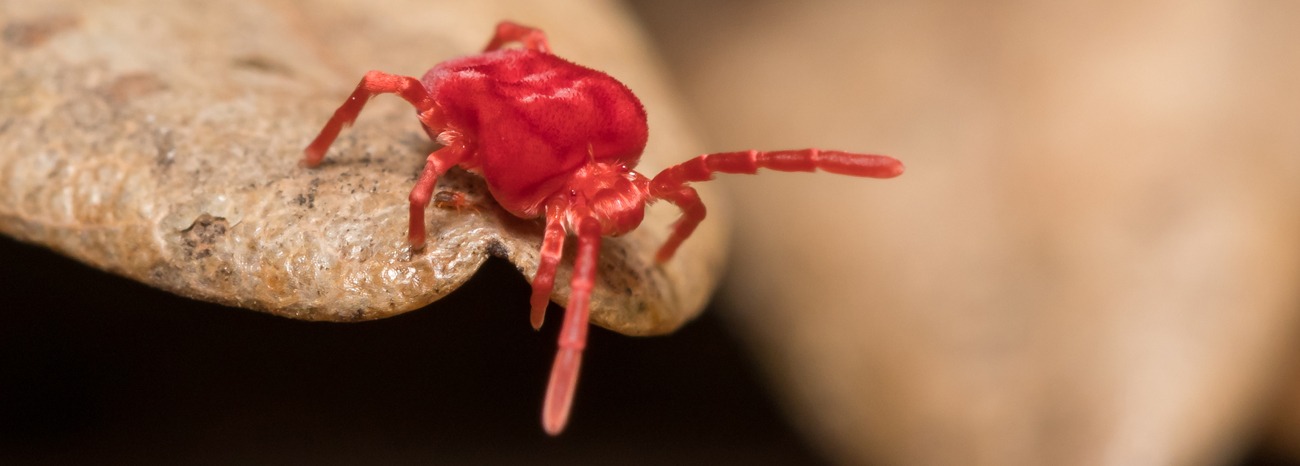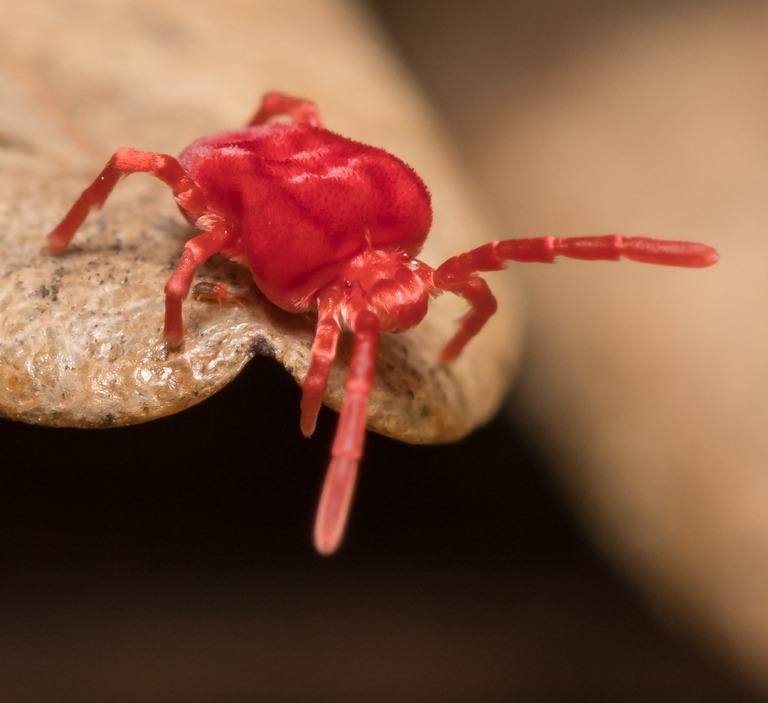Quick take: Clover mites don’t bite or spread disease—but they will leave rust-colored stains on paint, curtains and carpets if you crush them. Follow the steps below to keep them outdoors and off your belongings.
What Exactly Are Clover Mites?
Clover mites (Bryobia praetiosa) are plant-feeding arachnids—distant cousins of ticks and spiders—only 1⁄30 inch long. Their bright-red pigment turns anything they’re smashed on a rusty brown. Outdoors, they graze on well-fertilized turf, clover and ornamental plants; indoors they’re strictly a nuisance.
Clover-Mite Fast Facts
- Size: 0.75 mm (about the size of a pin head)
- Color: Brick-red adults; red to orange eggs
- Diet: Grass blades, clover, weeds, ornamentals
- Peak activity: Early April–May & mid-September–October in SE PA
- Health risk: None (do not bite humans or pets)
How to Identify Tiny Red Bugs in Your Home
- Look for motion: On sunny window sills or siding you’ll see what looks like red dust—then a speck moves.
- Check the legs: Clover mites have eight legs; the front pair extend forward like antennae.
- Do the blot test: Gently press one with white tissue; a brick-red smear confirms a clover mite, not a blood-feeder.

Red Clover Mite (tiny red bug) crawling over brown foilage
Why They Invade Houses
- Large, sun-warmed surfaces (brick, stucco, vinyl) attract them to overwinter or escape heat.
- Well-fertilized, lush lawn right up to the foundation provides a food factory a few inches away.
- Hairline cracks in mortar, weep holes, window frames and door sweeps are all they need—each mite is thinner than a credit-card edge.
Pennsylvania Seasonality Snapshot
- March–May: Eggs hatch; populations explode in cool, moist spring.
- June–August: Numbers dip as midsummer heat suppresses activity outdoors.
- September–October: Second surge as temperatures fall back into the 60s.
- November–February: Adults shelter beneath bark, siding and inside wall voids awaiting spring.
Are Clover Mites Dangerous?
No bites, no venom, no pathogens. The only hazard is the permanent, rust-colored stain their body pigment leaves when crushed on porous surfaces.
How to Get Rid of Tiny Red Bugs Indoors (DIY)
- Vacuum—don’t squash. Use a hand-vac with a disposable bag; empty outside.
- Sticky tape pick-up. Painter’s tape lifts mites from delicate drapes or lamp shades.
- Soap-and-water wipe-down. Mild dish soap breaks residual pigment on non-porous sills.
- Washable fabrics? Launder on cold first; heat can set the stain.
- Monitor. Place white index cards on window ledges to spot new activity.
Pro Tip: Avoid household insect foggers—mites hide in wall voids where aerosols don’t reach and residue can stain more than the mites.
Outdoor & Concrete Treatments
- Perimeter spray (professional-grade). A licensed tech applies a low-odor miticide 18–24 inches up the foundation and 3 ft out into the turf—especially on the south & west sides that bake in sun.
- Concrete patios & walkways. Power-wash first; then treat expansion joints where mites shelter.
- Lawn nutrition check. Excess nitrogen makes grass extra-succulent. Dial fertilizer back to ½ lb N per 1,000 sq ft in spring/fall.
- Trim back vegetation. Maintain a 12–18-inch plant-free strip of river rock or mulch along the foundation.
Prevention Checklist
- Seal gaps around windows, doors, utility lines and basement rim joists with silicone-based caulk.
- Replace torn screens and install 20-mesh insect mesh on attic and crawl-space vents.
- Keep grass 3 inches high (short lawn browns, attracting mites again).
- Divert water: fix downspouts & grade so soil stays dry—mites like moist thatch.
- Inspect sun-facing siding each April & September.
When to Call the Pros
If vacuuming feels endless or stains keep appearing, it’s time for professional help. Moyer’s licensed technicians use targeted, pet-safe treatments that reach wall voids and stop population booms before they start.
Frequently Asked Questions
Do clover mites bite people or pets?
No. Clover mites feed only on plant sap and never pierce skin.
Why do they leave red stains when crushed?
The rust-colored smear is a natural body pigment—not blood.
Can they infest bedding or food?
They wander randomly; they don’t nest or feed in fabrics or pantry items.
What’s the fastest way to remove stains?
Gently blot with cold, soapy water. For fabric, pretreat with an enzyme cleaner before laundering on cold. Heat can set the pigment.
Will they kill my lawn?
Large outdoor numbers may cause light, patchy discoloration in over-fertilized turf but rarely kill grass. Adjust nitrogen and irrigate deeply to reduce stress.

